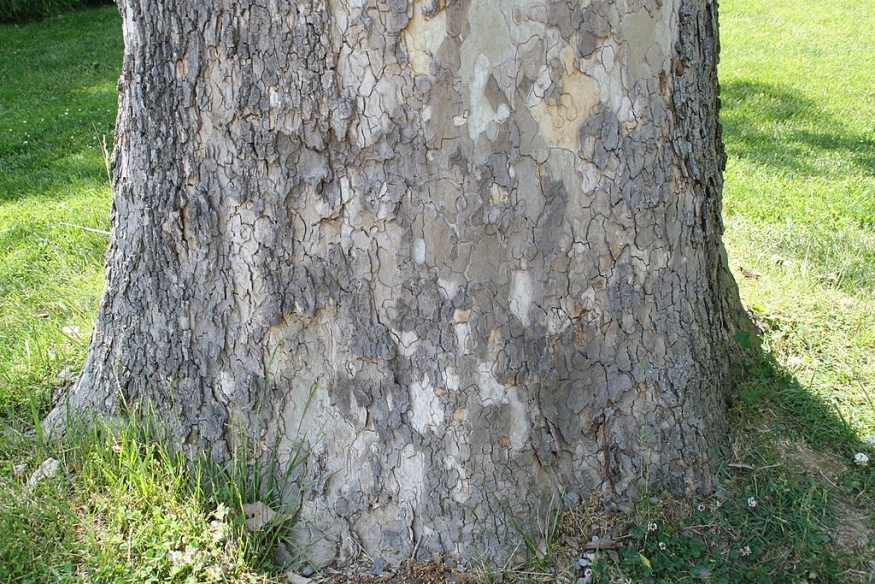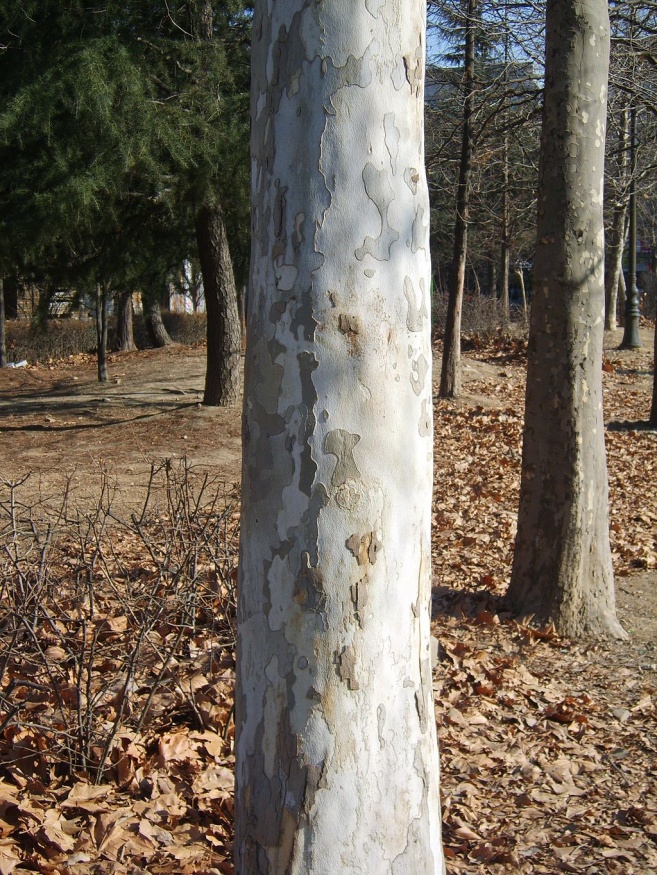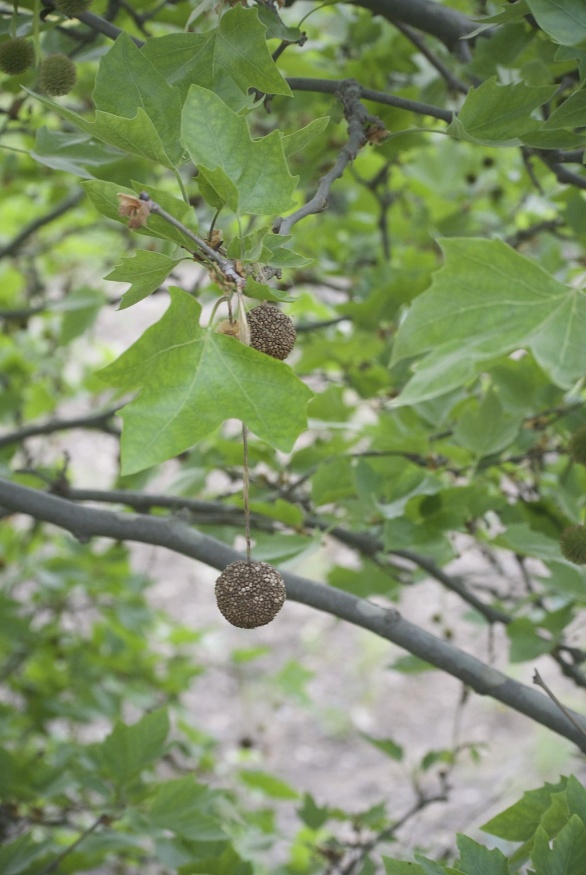American Sycamore

Other Names: sycamore, plane tree, buttonball tree, buttonwood, eastern sycamore,
Family: Platanaceae Native to: Eastern North America
Hardy to zone: 4
Natural habitat: inner forests
Shapes: round, oblong, single trunk
Height: 75-115ft
width: 75-100ft
Growth rate: medium
Unique attractions: bark
Tolerances: air pollution, deer resistant
Common uses: landscaping, cityscape, specimen
Insects: red spider mite, japanese beetle, scale, borers, caterpillars
Diseases: anthracnose, canker, powdery mildew, leaf spot
Light: full sun, partial shade
Soil: moist and fertile, tolerates heavy clay, wet

In terms of trunk diameter and biomass, American sycamore is one of the largest trees in eastern North America. Perhaps known best for its distinctive 'army camo' bark and interesting large horizontal branches; the bark displays off-white, green, and cream coloured underlayers. A loose dark outer layer peels in flakes. Found in scattered locations throughout eastern North America, sycamore grows mainly in bottomland forests with elm, ash, and cottonwood. The tree can sometimes act as a pioneer species in disturbed areas with adequate moisture or in uplands with oak and hickory. Sycamore is widely planted in landscapes and urban areas where adequate space to grow is provided. The shape is tall, Round and wide spreading. Shallow, fibrours roots sometimes invade pipes and foundations as willows do.

Leaves have 3 to five lobes and resemble those of a maple tree. Stipules (leaf like attachments) are notably at the base of each leaf stalk. Ball-shaped fruiting bodies are born singular, this helps to differentiate American sycamore from the London plane tree (platanus x acerifolia), which produced them in pairs. Seed like fruits are held together on the fruiting body and are hairy towards the ball's center. This allows them to be caught in the wind when broken apart. Sycamore wood is valuable for furniture, interiors, crates, pulp wood, and other applications. Though heavy and hard, the grain is twisted and not very structurally strong.
References
The Arboretum - University of Guelph. (n.d ). American Sycamore (Platanus occidentalis). Retrieved from https://www.uoguelph.ca/arboretum/thingstosee/trees/americansycamore
Fire Effects Information System (FEIS).(n.d.). Platanus occidentalis. Retrieved from https://www.fs.fed.us/database/feis/plants/tree/plaocc/all.html
Missouri Botanical Garden. (n.d.). Platanus occidentalis. (n.d.). Retrieved from http://www.missouribotanicalgarden.org/PlantFinder/PlantFinderDetails.aspx?kempercode=a891
Tree Atlas - Ontario. (2020). Sycamore. Retrieved from https://www.ontario.ca/page/sycamore


